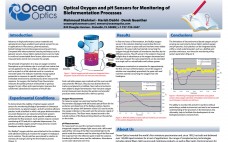Advances in high-performance sensor materials and optoelectronics have enabled optical sensors for use in markets including the life sciences, environmental, food and beverage, process control and biotechnology. Compared with traditional electrochemical sensing techniques such as galvanic, paramagnetic and fuel cell sensors, these optical sensors can be made in small and customizable form factors such as probes and self-adhesive patches. The sensors also have fast response, provide long-term stability and are chemically inert. This experiment demonstrates the viability of optical sensors…
Analytical
Implementation of Single-Use Technology in Biopharmaceutical Manufacturing
The increasing application of single-use components and systems in bioprocessing represents one of the most significant changes in biopharmaceutical manufacturing in recent times. Driven by various factors such as improved efficiency, flexibility, and economics, this trend also presents specific challenges to end users. In one industry review by Langer, extractables and leachable compounds from disposable components were considered by end users to be a major area of potential concern regarding safety, efficacy, and stability of the pharmaceutical product…
Monoliths Open the Door to Key Growth Sectors
The enabling value of monoliths was strongly in evidence at the 4th International Monolith Symposium, held 29 May – 2 June in the Adriatic resort city of Portoroz, Slovenia. Forty-seven oral presentations and 34 posters highlighted important advances in vaccines, gene therapy, phage therapy for infectious disease, and monoclonal antibodies, as well as continuing advances in the performance of monoliths themselves. As these fields advance in parallel, it becomes increasingly apparent that monoliths offer industrial capabilities substantially beyond…
PEGylating Peptides (and Proteins)
Peptides should be promising drug candidates. But their small size makes delivery difficult and gives them an extremely short in vivo half-life. They are often cleared by the kidneys or reticuloendothelial system only minutes after being administered, and they are susceptible to degradation by proteolytic enzymes. These problems could be solved by linking them to polyethylene glycol (PEG). Repeating chains of ethylene oxide (CH2CH2O), PEG molecules can be long or short and straight or branched. PEG groups are linked to…
Protein Conjugates
Methods and Materials Thanks to vendors large and small — such as Invitrogen (www.invitrogen.com), ProteoChem (www.proteochem.com), Sigma Aldrich (www.sigmaaldrich.com), Soltec Ventures (www.soltecventures.com), and Thermo Scientific Pierce (www.piercenet.com) — bioconjugation chemistry is a field of many options. For example, amine coupling of lysine amino-acid residues typically involves amine-reactive succinimidyl esters. Sulfhydryl coupling of cysteine residues uses a sulfhydryl-reactive maleimide. Photochemically initiated free-radical reactions offer broader reactivity. Most processes couple small molecules to proteins or proteins to one another (e.g., antibodies…
Industrializing Stem Cell Production
Stem cells have potential as a readily available, consistent source of many differentiated cell types. This unique property can be leveraged both for therapeutic purposes and for facilitating and improving a number of drug discovery and development processes. Large-scale, “industrialized” production of human stem cells in tightly controlled conditions will be required to deliver the quantity and quality of cells needed to support clinical trials and drug discovery development activities (Figure 1). Achieving this level of production while meeting rigorous…
Rapid and Scalable Microplate Development of a Two-Step Purification Process
High-throughput screening and process development methods are becoming more widely used in the biopharmaceutical industry. Recent development of high-expression (high–target-titer) recombinant culture methods has enhanced the need to also develop more effective separation products, methods, and processes (1). Part of the solution would be chromatographic resins offering higher capacities and flow rates. However, developing an optimized purification process that involves several chromatographic steps can consume significant time and samples. In addition, a purification process developed…
Putting It All into Perspective
As part of The Automation Partnership’s “20 Years of Automated Cell Culture” series, science writer Sue Pearson interviewed Dr. John Birch, the chief scientific officer of biopharmaceuticals for Lonza Custom Manufacturing APIS based in Slough, UK. Birch has been with that company since 1996, Before that, he held senior technical positions at Tate and Lyle, GD Searle, and Celltech. Birch has a PhD in microbiology from London University, where he also spent a period lecturing before moving into…
Sequence Variant Analysis Using Peptide Mapping By LC–MS/MS
Monoclonal antibodies are usually expressed in mammalian cell lines and are produced in several variants known as isoforms (1,–2). Microheterogeneity can result from posttranslational and enzymatic modifications as well as those caused by processing, alteration, storage, and incorrect translation of the target protein (1,3). Common sources of heterogeneity include Fc glycosylation, partial carboxypeptidase processing of heavy-chain (HC) C-terminal lysine residues (4), deamidation or isomerization (5), Fc methionine oxidation, hinge-region fragmentation (6), aggregation, and sequence variants. Sequence variants are…
Demonstrated Performance of a Disposable Bioreactor with an Anchorage-Dependent Cell Line
Increased adoption of disposable storage vessels and mixing systems for biopharmaceutical manufacturing operations has provided economic and efficiency benefits to a number of life-science companies. Single-use technologies have reduced validation requirements, shortened turnaround times, eliminated cleaning regimes, increased the speed of set-up procedures, and facilitated the development of flexible manufacturing platforms. Many biomanufacturers have sought to extend those benefits into the field of cell culture by using disposable bioreactors. Here we describe work undertaken to develop and demonstrate…

